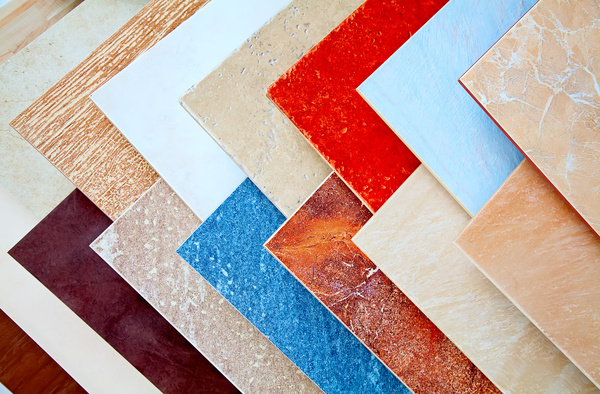Solution for: How to Choose Flooring Materials
Answer Table
| 1. plastic | 6. grain patterns |
| 2. processing | 7. words |
| 3. seasoned | 8. 0.8 |
| 4. polished | 9. 0.1 |
| 5. the cost | 10. black velvet |
Exam Review
How to Choose Flooring Materials

We’ve been talking about choosing building materials in the last week. Now, a great many factors influence the choice of building materials. You can’t make a house of cards, right? And “people who live in glass houses...” and all that... Anyhow, today I’d like to say a few words about flooring.
Some artificial materials can be used, like plastic for instance, which offer mixed blessings when used as a flooring surface. On the one hand, plastic is cheaper than nearly any other alternative, short of bare ground. Plastic also does not warp like wood. On the other hand, the best that can be said about plastic is that it “looks like” wood or stone. However, it cannot replace the real materials. As I have mentioned, I’m fixing up a new house. The decorator my wife hired told me, “Plastic does a great job of looking exactly like plastic.” Besides, it scratches easily, fades or discolours, and starts cracking within a year or two. So, if you’re fitting out a sleazy hotel or plan to live in a trailer park, go with the plastic. Really, though, for all intents and purposes, this leaves us with wood or stone as choices for flooring.
Stone and wood are alike in at least one respect: both go through processing before they can be put to use. Since few of us cut our own lumber or quarry our own stone, this is not perhaps a pressing concern. Still, do-it-yourselfers would do well to remember to buy only properly seasoned wood. Unseasoned wood warps and a warped floor quickly becomes firewood (and its owner quickly becomes poorer). Likewise, except for dull-hued materials like slate or sandstone, most stone floors are polished before installation. The choice goes well beyond just wood or stone - each type requires many further considerations. A few special remarks are called for when considering wood, for example. As always, aesthetics, personal taste, and layout all play roles as well as the type of house or room. Oh, and certainly don’t forget the cost. When it comes to cost, a rule of thumb is that the softer and less exotic the wood, the lower the cost. In the US, for instance, pine is both ubiquitous and cheap. Mahogany is imported and exorbitantly expensive. If you’re on any kind of budget when remodeling, it’s really helpful to remember to go for the softer woods.
Aside from cost, there are still lots of different factors that are important in choosing the best flooring for the job. Continuing with the example of wood, one must consider the effects of each type of wood on the mood of the room. When selecting the best wood to use, particular attention needs to be paid to its grain patterns, texture, and colour. In rooms where relaxation or deep thought is the aim - say bedrooms or the study - dark, strong grained woods are the rule.
Here the grain ought to match the furniture for a feeling of homogeneity. In rooms where activity and motion are typical - the dining room or living room - lighter, finer-grained lumber is more suitable.
In such a setting, the wood grain might be useful in offering a contrast to the furniture. This leads to a feel of subconscious excitement, in keeping with the room’s function.
In either case, though, consult a decorator. It is a decorator’s job to know what materials to use to fit the function of the room. Though some things about putting together a room are subjective and based on one’s individual taste, materials appropriate to a room’s function are much more straightforward. A decorator takes the needs of the customer and uses a mathematical formula, rather than subjective words. Since feelings vary from person to person, verbal descriptions of wood types tend to be ambiguous. You want the wood you select, not something approximate! And if you do decide to do it yourself, remember that all wood must be treated with preservatives to enhance its appearance and preserve its natural beauty.
In the case of stone, or “quarry tile” as flat-cut flooring stone is properly called, a new set of considerations must be weighed up. Simple colour aside, the degree of reflection must be kept in mind. This is called the “reflectance rate”, which is expressed in a number between 0.0 and 1.0, depending on the amount of light it reflects.
At one end of the scale is polished silver. At a rating of 1.0, this shiny surface reflects nearly all of the light directed at it. Numbers closer to zero describe materials that absorb more light. Moving down the scale a bit, we see the plastic that has been painted white has a rate of 0.8, which makes sense. We know that the colour white reflects all other colours while black absorbs all colours, and plastic itself is a relatively reflective material.
Materials that are denser and darker have reflectance rates much closer to zero. The quarry tile I mentioned a while ago has a rate of 0.1. As you may know, quarry tile is generally dark brown and made from clay so it is quite dense. Of course, there is considerable variation among types of quarry tile because of the hue or treatment of the clay during its creation.
Does anyone have any guesses as to what materials may have a rate of almost 0.0? We can guess most of these materials are black in colour, but plastic, wood, and even stone reflect some light. One material with a rate of almost 0.0 is black velvet. The texture produces almost no shine at all.
Carrara marble, despite its white hue, is actually lower in reflectivity than black onyx! In any case, the fact that tiles vary somewhat should not be forgotten. A highly reflective floor would not be suitable in a library; it would be indispensable in a ballroom (should your home be large enough to feature one). Again, a rule of thumb is that “light means lively”. Since form and material follow function, one should only use the more reflective materials in rooms where the cultivation and expression of energy is important. Bear in mind too that most types of stone cost more than all but the rarest of woods.
Of course, there is no reason why some rooms of a house should not feature wood floors or other stone tiles. You can even mix the two. A room with wood panels on the walls can have a beautiful stone floor. My bedroom has white birch walls and a light blue slate floor. The place looks like a Russian hunting lodge. Remember, though, go with what feels right for you. Good taste and the “laws” of interior design are the homeowner’s servants, not his master. It’s only beautiful when you decide it is. I mean, you’re the one who lives there, not the decorator, right? OK, are there any questions?
Questions 1-7
Complete the notes below.
Write NO MORE THAN TWO WORDS for each answer.
How to Choose Flooring Materials
Source
1 There are some man-made materials like
Answer: plastic Locate Listen from here
2 Before being used, material undergoes
Answer: processing Locate Listen from here
3 Wood should be cut and
Answer: seasoned Locate Listen from here
4 Stone should be cut and
Answer: polished Locate Listen from here
Selection
5 Aside from environmental factors, one should take into account during construction.
Answer: the cost Locate Listen from here
6 Some properties of materials affect mood, such as , texture, and colour.
Answer: grain patterns Locate Listen from here
7 Use a mathematical formula to choose the type of wood, because are subjective, which are ambiguous in verbal description.
Answer: words Locate Listen from here
Questions 8-10
Complete the table below.
Write NO MORE THAN TWO WORDS AND/OR A NUMBER for each answer.
|
MATERIAL |
REFLECTANCE RATE |
|
Polished silver |
Almost 1.0 |
|
White-painted plastic |
Approximately 8 |
|
Quarry tile |
Approximately 9 |
|
10 |
Almost 0.0 |
Other Tests
-
Total questions: 10
- 3- Multiple Choice
- 3- Plan, map, diagram labelling
- 4- Summary, form completion
-
Total questions: 10
- 6- Plan, map, diagram labelling
- 4- Summary, form completion
-
Total questions: 6
- 6- Summary, form completion
-
-
Total questions: 10
- 6- Summary, form completion
- 4- Sentence Completion
-











